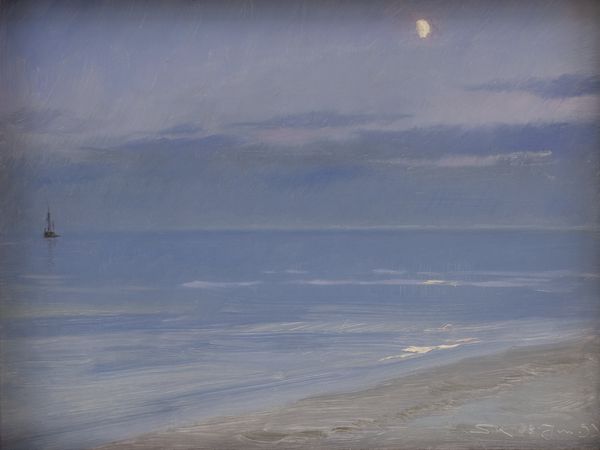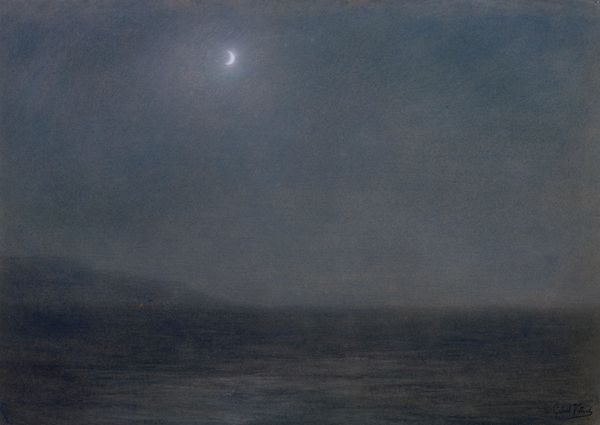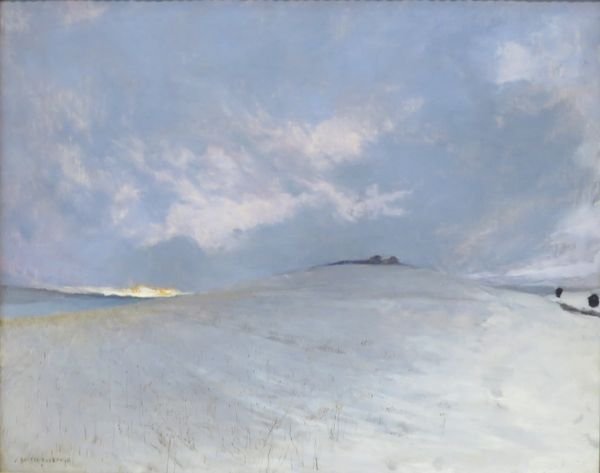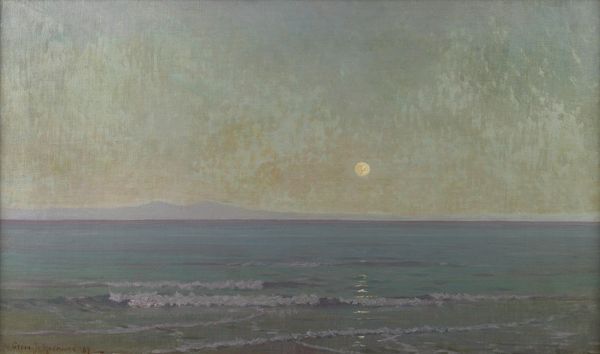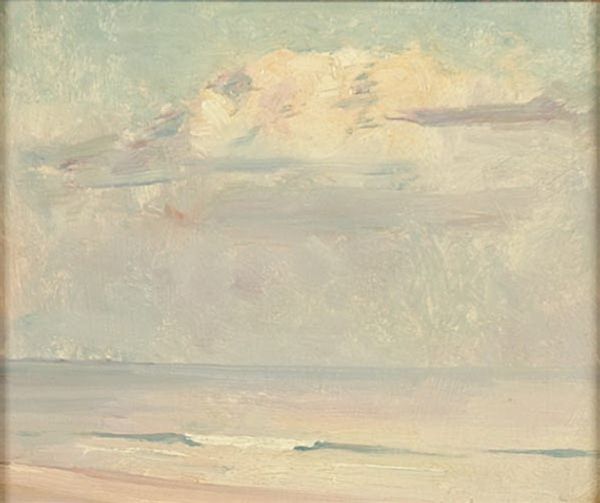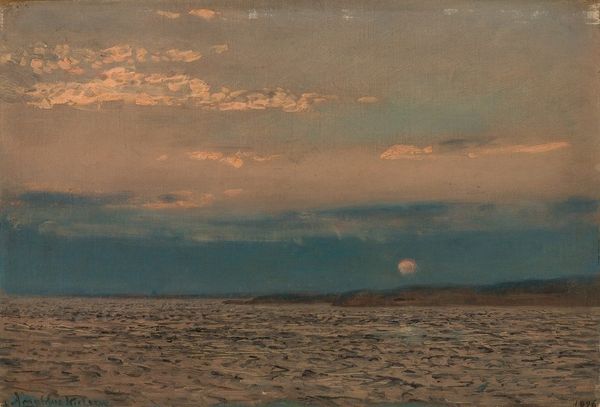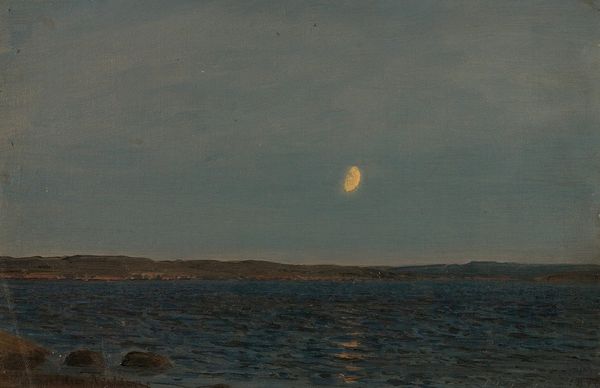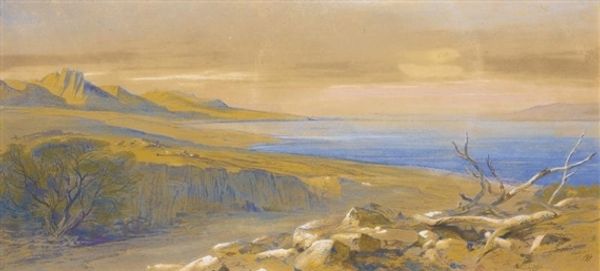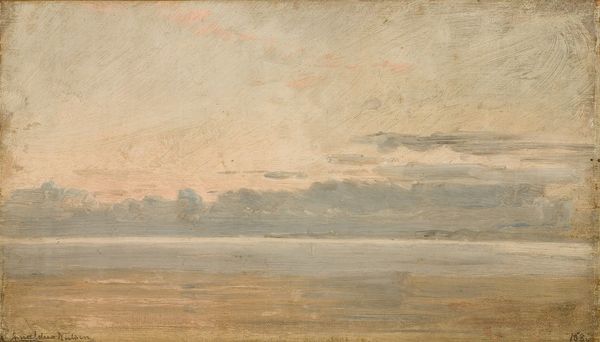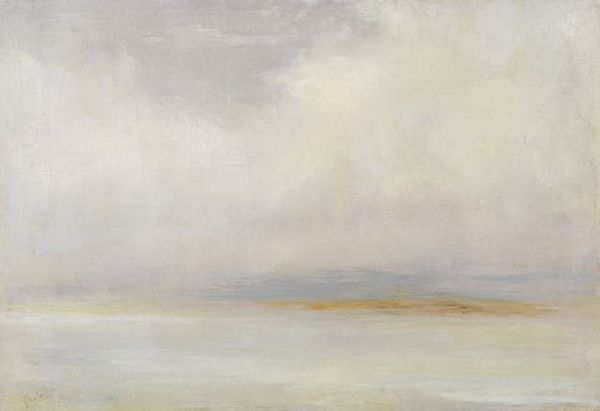
Copyright: Public Domain: Artvee
Curator: Peder Severin Krøyer, a central figure in the Skagen group of painters, created this oil painting entitled "Skagen Beach in Moonlight" in 1899. Editor: It's profoundly serene. The muted blues and grays create such a contemplative, almost melancholic atmosphere. And that little sliver of moon! It's like a tiny beacon. Curator: Krøyer's Skagen paintings reflect the growing popularity of plein-air painting and capture the essence of the artist colony’s environment, attracting painters, writers, and intellectuals from across Scandinavia and Europe in pursuit of this lifestyle. Editor: Yes, you can almost feel the cool, damp air. Look how he renders the water—the subtle shifts in tone suggesting the gentle movement of the waves. It's masterfully simple and elegant. But also the position of that little sail boat to the left gives it a perfect subtle, triangular dynamic with the moon, which I find pretty suggestive! Curator: Indeed. It evokes a sense of tranquility and escape, but it also speaks to broader themes of isolation and the relationship between humanity and the natural world during that period. Many artists chose to work en plein air, a tendency related to the development of portable painting equipment that, alongside travel and new urban lifestyles, redefined art subjects for many Impressionist and Post-Impressionist painters. Editor: I wonder, does this interest in this style make us prone to find this image just like the many others that came out around that time, thus overlooking important qualities? Curator: Possibly, but its enduring appeal lies in its formal qualities as much as in its historical context. Its minimalist design, for instance, creates an engaging perspective, as it presents different vanishing points—something the Impressionist circle has developed in the previous decades. Editor: Thinking about its place now, "Skagen Beach in Moonlight" offers us a timeless reflection on the power of nature and the enduring quest for solace and beauty in a rapidly changing world. Curator: Yes, it remains relevant because it encourages viewers to slow down, observe, and find beauty in the ordinary, prompting us to understand what motivated this production and how its meanings spread to an international scene.
Comments
No comments
Be the first to comment and join the conversation on the ultimate creative platform.
